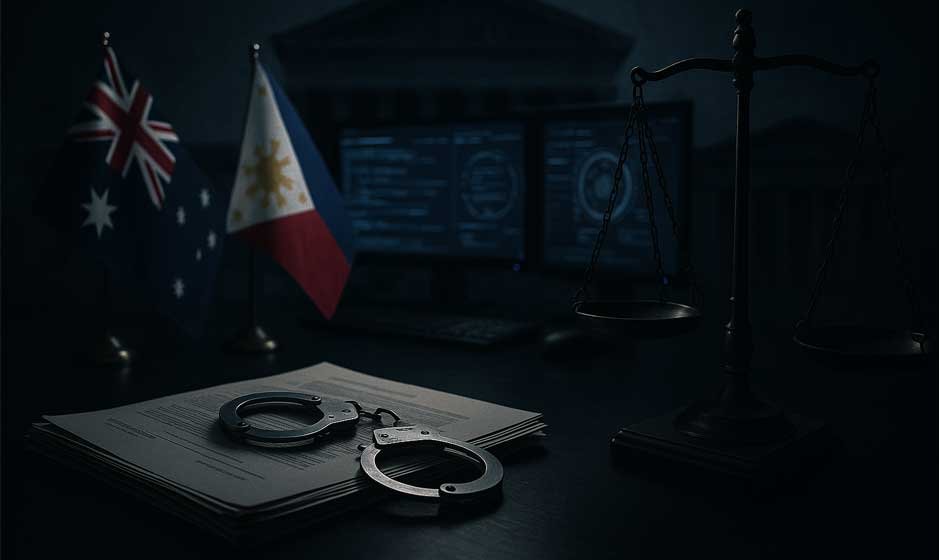Peter Scully: The Australian Convicted of Child Exploitation in the Philippines – A Comprehensive Case Study

Who is Peter Scully? Understanding One of Australia’s Most Notorious Criminals
When discussing international criminal cases that have shocked the world, few names evoke as much revulsion as Peter Gerard Scully. This Australian man became the face of one of the most disturbing child exploitation cases ever prosecuted across international borders.
Scully’s story isn’t just about one man’s descent into criminality. It’s a stark reminder of how technology can be weaponized against the most vulnerable members of society. His case forced governments worldwide to confront uncomfortable truths about online child exploitation.
What makes this case particularly significant is how it exposed the gaps in international law enforcement cooperation. Before Scully, many countries struggled to coordinate efforts against digital predators who operated across multiple jurisdictions.
From Melbourne Suburbs to International Infamy
Born on a summer day in January 1963, Peter Scully grew up in Melbourne like thousands of other Australian children. At nearly six feet two inches tall, he cut an imposing figure, but those who knew him in his early years would never have predicted his future notoriety.
Scully later claimed that a priest sexually abused him during childhood. Whether true or not, this allegation would become part of his defense narrative in later legal proceedings. Many experts remain skeptical of such claims when made by convicted offenders.
For years, Scully lived what appeared to be an unremarkable life in Narre Warren, a middle-class suburb of Melbourne. Neighbors knew him as a family man with a wife and two children. Behind closed doors, however, financial troubles were mounting.
These money problems would eventually drive Scully to make decisions that changed everything. Like many criminals before him, he saw opportunity in desperation.
Why the Philippines Became Scully’s Hunting Ground
The year 2011 marked a turning point in Scully’s life. Facing mounting debts and potential legal troubles in Australia, he made a calculated decision to flee to the Philippines. His choice of destination wasn’t random.
The Philippines offered everything a predator like Scully needed. English is widely spoken there, making communication easier. Internet infrastructure had improved dramatically, enabling digital crimes. Most importantly, widespread poverty created vulnerable populations.
Scully first landed in Manila, the bustling capital where foreigners can easily blend in. But he didn’t stay there long. Instead, he moved to Cagayan de Oro, a city on the island of Mindanao that would become synonymous with his crimes.
This relocation strategy showed careful planning. Cagayan de Oro was large enough to provide anonymity but small enough that a foreigner with money could establish influence quickly.
The Dark Web Empire That Shocked Investigators
What Scully built in the Philippines defied comprehension. Using his technical knowledge and the anonymity of the dark web, he created what investigators would later call one of the most sophisticated child exploitation operations ever discovered.
His website, “No Limits Fun,” operated in the darkest corners of the internet. The name itself was a chilling promise to customers willing to pay premium prices for increasingly disturbing content. Some videos sold for as much as $10,000 to buyers around the world.
The most infamous production was titled “Daisy’s Destruction.” This video became legendary among investigators for all the wrong reasons. Its very existence demonstrated how far Scully was willing to go to satisfy his customers’ twisted demands.
Authorities eventually documented crimes against 75 children. These weren’t just cases of exploitation – they involved systematic torture and, in at least one case, murder. A young girl named Cindy was killed and buried beneath one of Scully’s rented properties.
How International Cooperation Brought Down a Monster
Catching Scully required unprecedented cooperation between law enforcement agencies across multiple countries. The investigation began when suspicious online activity triggered alerts in various international monitoring systems.
The National Bureau of Investigation in the Philippines took the lead, but they couldn’t have succeeded without help from Australian authorities and other international partners. Digital evidence had to be carefully preserved and shared across jurisdictions with different legal systems.
February 20, 2015, became a date that many investigators will never forget. That’s when NBI agents finally arrested Scully, ending years of meticulous investigation work. The arrest itself was anticlimactic compared to the horrors they had uncovered.
Building a case against Scully presented unique challenges. Much of the evidence existed in digital form, requiring specialized expertise to authenticate and present in court. Investigators had to prove not just what happened, but that Scully was responsible for orchestrating it all.
Justice Served: Multiple Convictions and Historic Sentences
The Philippine court system handled Scully’s case with remarkable thoroughness. Rather than rushing to judgment, prosecutors built their cases methodically, resulting in multiple convictions that sent shockwaves through the international criminal community.
In 2018, Scully received his first major sentence: life imprisonment for human trafficking and rape charges involving seven children. But prosecutors weren’t finished. They had been building an even stronger case for additional charges.
November 2022 brought the most significant development. A Cagayan de Oro court sentenced Scully to an additional 129 years in prison after he entered a plea agreement on 60 separate charges. The numbers were staggering – trafficking, rape, child abuse, and production of illegal material.
Scully’s accomplices didn’t escape justice either. Lovely Margallo, identified as his girlfriend and co-conspirator, received 126 years. Two other associates got sentences exceeding nine years each. Prosecutor Merlynn Barola-Uy called the convictions a “sweet victory” for the victims and their families.
How One Case Changed Child Protection in the Philippines
The Scully case forced the Philippines to confront an uncomfortable reality. The country had become what experts now call a global hotspot for online child sexual exploitation. This wasn’t an accident – it was the result of specific conditions that predators learned to exploit.
High internet connectivity combined with widespread poverty created perfect conditions for exploitation. Add in English language proficiency, and the Philippines became attractive to international predators seeking vulnerable victims.
The government’s response was swift and comprehensive. Officials declared an “all-out war” on online child exploitation, implementing new policies and dedicating additional resources to prevention and prosecution efforts.
Recent statistics paint a sobering picture of the challenge ahead. A 2022 study by UNICEF, Interpol, and ECPAT International found that one in five Filipino children between ages 12 and 17 had experienced online sexual abuse. These numbers underscore why the Scully case became such a catalyst for change.
Setting Precedents for International Digital Crime Prosecution
Beyond the immediate impact on child protection, the Scully case established important legal precedents for prosecuting international digital crimes. The successful coordination between Australian and Philippine authorities became a model for future cooperation efforts.
Digital evidence collection across international boundaries had never been tested on this scale before. Investigators had to develop new protocols for preserving and sharing evidence while respecting different countries’ legal requirements.
The case also highlighted the importance of victim-centered approaches to prosecution. Survivors needed long-term support that extended far beyond the courtroom. This recognition led to improved victim services and advocacy programs throughout the region.
Perhaps most importantly, the case demonstrated that international predators could no longer assume they were beyond the reach of justice. The successful prosecution sent a clear message to other would-be offenders.
Lessons Learned and the Road Ahead
The Peter Scully case represents more than just one man’s conviction. It’s a watershed moment that changed how the world approaches international child exploitation cases. The lessons learned continue to influence policy development and law enforcement training programs globally.
International cooperation proved essential, but it required more than just goodwill. Countries needed compatible legal frameworks, shared technical capabilities, and coordinated investigation protocols. The Scully case helped identify these requirements and provided a roadmap for meeting them.
Victim support emerged as another critical component. Survivors of exploitation need comprehensive, long-term assistance that addresses both immediate trauma and ongoing psychological needs. The Philippines has made significant strides in this area since the Scully case.
Technology continues to evolve, and so do the methods used by predators. The fight against child exploitation requires constant adaptation and innovation. The Scully case provided valuable insights, but it also highlighted how much work remains to be done.
The ultimate legacy of this case may be its role in protecting future victims. By demonstrating that international predators can be caught and prosecuted, it serves as both a deterrent and a promise to survivors that justice is possible, even in the most challenging circumstances.



